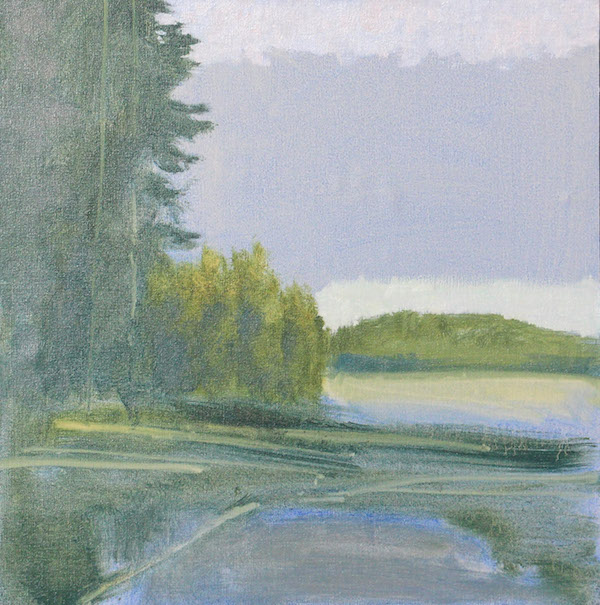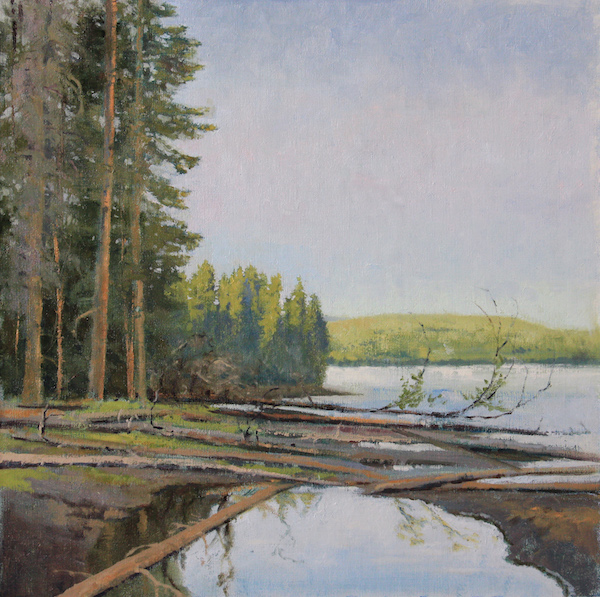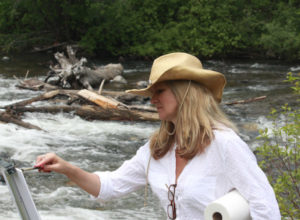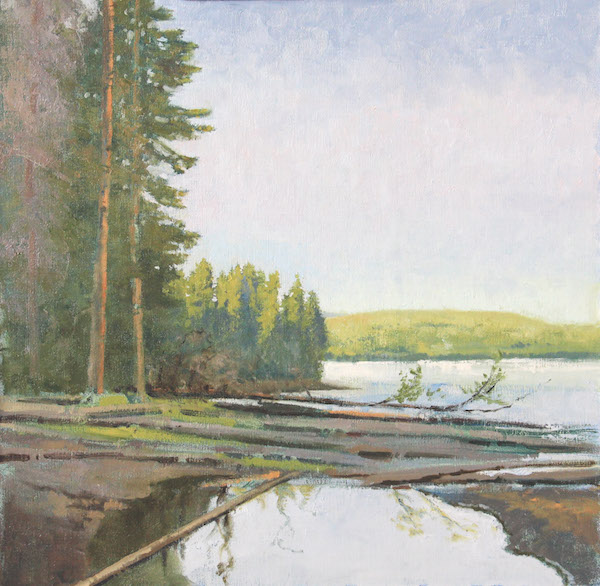Like playing high or low notes on a piano, artists can ‘key’ their colors to create drama and mood in landscape painting. We do this by understanding and using value.
For instance, high key colors in paintings use tints, or light values. Low key colors are shades, or dark values. Middle key colors are medium value or pure colors.
In this fabulous guest post, landscape painter Shanna Kunz uses a limited scale of high values to demonstrate. Shanna also demonstrates how to create a low-key painting in my new book, Fine Art Tips with Lori McNee by North Light Books!
Whether you draw or paint with watercolor, oil or acrylics, Shanna’s lesson will help you create better paintings. Keep in mind, strong paintings usually are limited to 3-4 values, and 3-5 shapes.
How To Use Value to Create Mood In Painting by Shanna Kunz
My high-key piece below was started with an ultramarine blue ground. I picked the ultramarine color because it was so evident in the shadows of the trees, and I could use this hue as my accents.
I wiped back my very lightest value masses and established my darker masses, still keeping to 3-5 important shapes.
Using a rag, I wiped out some of the fallen log shapes to give myself a better idea of the drawing.
Here I have started to gradate the sky mass using a light ultramarine blue at the top down to a very light cerulean blue near the horizon. I have my lightest lights and my next to darkest darks established.

I start to lay in local color, using the mid-value of the darkest mass. With a high-key painting, this is more difficult and my choice of palette is important. I can’t depend on my standby grays because the value is too dark, so I try to work with color that is straight out of the tube.
The color is not much more than a five on the value scale. But, of course I never use color straight out of the tube!
![]()
In a high key painting, or any painting for that matter, the relationship of gray temperatures against a pure color creates space and dimension. The back plane will need to be tempered, lightened and the edges softened to push it back and give it more atmospheric light.
In this stage, I am reworking color temperature shifts to create a push and pull of the largest masses. The dead gray tree to the left needed more definition than I had originally wanted to make it readable.
I redefined a few shapes and details for composition, twigs and branches to bring the viewer back up in the sky from below, more sky holes to make the trees on the left feel less heavy and more pops of color in the row of lit pines in the middle. I also strengthened the reflection of the trees in the pool of water up front.

Here, I have glazed the foreground of land and water to give the painting more depth. I have also gone back into the upper sky and darkened it with a more neutral blue for it’s gradation.
I have added more trunks and shapes in places and softened edges of some of the other fallen trunks to quiet it down a little. The fallen log extending in from the bottom was reworked for a better perspective and a lighter value was added along with branches.
Last but not least, my small accent darks were added to create rhythm and movement throughout. The edges of the reflections in the front pond were softened and a few more pops of pure color were added as the finishing touch.
Materials List:
- Utrecht Ultramarine Blue (only as the ground)
- M Graham Cobalt Blue
- Gamblin Cerulean Blue
- Gamblin Radiant Blue
- Daniel Smith Quinacridone Rose
- Daniel Smith Quinacridone Burnt Orange
- Daniel Smith Quinacridone Gold
- Daniel Smith Sap Green
- M Graham Thalo Green
- Daniel Smith Raw Umber Violet
- Utrecht Cadmium Yellow Deep
- M Graham Cad Yellow Medium
- M Graham Yellow Ochre
- M Graham Raw Sienna
- Gamblin Warm Gray
- Gamblin Cool Gray
- Gamblin Green Gold
- Utrecht Naples Yellow Light
- Utrecht White
- Rosemary Brushes – series of flats ranging from 1/4″ to 1/2″
- Utrecht Watercolor Brush, 1″ flat – very well worn with frayed ends
- Langnickel brushes – flats from 1/4″ to 3/4″
- Landnickel brushes – filberts 1/4″
- Q-tips
- Rags for wiping out
- Two palette knives for applying paint to surface and mixing
*****
Guest artist/author: Shanna Kunz is my good friend and a popular contemporary landscape painter of mood, light and color. Her artistic focus is  on the diverse landscapes of western America. She is a popular workshop teacher and the co-owner of Bella Muse Gallery in Ogden, Utah.
on the diverse landscapes of western America. She is a popular workshop teacher and the co-owner of Bella Muse Gallery in Ogden, Utah.









Thank you for all the tutorials,
You are very welcome. Thank you!